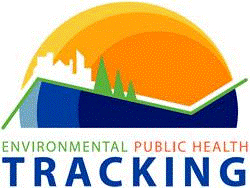Occupational Health Data and Information
Introduction
Most people spend the majority of their waking hours at work. As a result, occupational exposures to hazards are a large and important part of overall public health. The risk of exposure to hazardous materials and/or conditions in the workplace depends on the type of industry as well as the nature of the specific tasks performed by workers. Risk of exposure is also affected by the number and types of preventive measures in place to minimize workplace exposure(s). Often, it's the extremely dangerous tasks that are done safely, while less dangerous ones result in exposure.
There are very specific regulatory requirements that employers must follow related to the potential for exposure to hazardous chemicals and conditions in the workplace. In South Carolina, SC OSHA establishes and enforces these regulations. Nationally, the Centers for Disease Control and Prevention (CDC) has a branch, the National Institute for Occupational Safety and Health (NIOSH), that is dedicated to tracking occupational exposures as well as educating employers and employees about work related hazards. The United States Bureau of Labor and Statistics in the Department of Labor houses both data and statistics related to occupational illnesses and injuries, including those reported to DHEC in South Carolina.
The focus of this page is to allow access to data from South Carolina on health effects associated with work place exposures for researchers, employers, employees, and the general public. On these pages, you will find data and information about several occupational health indicators:
- Work-Related Hospitalizations
- Hospitalizations for Work-Related Burns
- Hospitalizations from or with Pneumoconiosis
- Work-Related Elevated Blood Lead Levels Among Adults (state residents aged 16 years or older)
- Hospitalizations for Work-Related Low Back Disorder
More will be added as the data/information becomes available. Our hope is that in making these data available, it will be easier to determine the South Carolina population's health status with respect to workplace injuries and illnesses.
By looking at these indicators over time, we can evaluate trends within South Carolina as well as make comparisons with other states' health or risk status. This will also guide priorities for targeted prevention and intervention efforts and aid us in developing awareness and educational tools to help working populations better understand risk(s) and how to control them.
Tracking and Mapping the Data
Use this interactive tool to choose cancer indicators and measures to generate maps, bar charts and trend lines.
Understanding how the data are collected, calculated, and interpreted.
Take Action
Occupational exposures can be prevented or greatly reduced by the use of engineering controls, work-place procedures and/or personal protective equipment. Using local ventilation to pull hazardous vapors away from workers would be an example of engineering controls being used to reduce exposure; requiring personal protective equipment (like a respirator) or clothes (like gloves) when working with or near hazardous chemicals is an example of a work-place procedure implemented to reduce exposure.
These data can give us information (see FAQs) that allows one to determine the extent of occupational injuries/illnesses, and to identify the workers or work tasks where the risk is greatest. With this information, exposure prevention measures can be identified and prioritized. In short, data helps us to become aware of the extent of the risk, and helps focus efforts to reduce the risk.
Related Resources
The links below provide more information (i.e., risk factors, symptoms, prevention, treatment, etc.) on many types of occupational health issues.
- Occupational Health Fact Sheet (DHEC)
- Information About Workplace Exposures (Haz-Map)
- Occupational Health (National Library of Medicine)
- National Institute for Occupational Safety and Health (NIOSH)
- Workplace Safety and Health Topics (NIOSH)
- Preventing Slips, Trips and Falls in the Workplace (NIOSH)
- Adult Blood Lead Epidemiology Surveillance (ABLES) Program (NIOSH)
- Reducing Exposure to Lead and Noise at Outdoor Firing Ranges (NIOSH)
- Occupational Health Hazard Evaluation Program (NIOSH)
- Occupational Data and Statistics Gateway (NIOSH)
- Restaurant and Food Services Health and Safety Information Sheet (NIOSH)
- Regulation of Occupational Lead Exposure (OSHA)
- OSHA Regulations/Standards (OSHA)
- Back-related injuries (OSHA)
- Differences between SC and Federal OSHA Standards (SC OSHA)
- South Carolina Injury Statistics (US Bureau of Labor and Statistics)
Track it. Map it. Use it. SC Environmental Public Health Tracking
